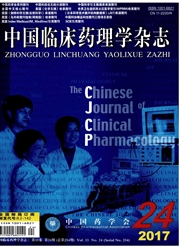

 中文摘要:
中文摘要:
目的观察新疆变应性鼻炎(AR)的患病情况、人群分布特征及其信号转导和转录激活因子6(STAT6)基因多态性与AR的关联。方法分层整群抽取新疆伊犁和喀什地区维吾尔族(维族)和汉族居民4254名,通过问卷、鼻腔检查和鼻粘膜涂片方法诊断AR;用PCR-RFLP方法检测STAT6基因rs167769、rs3024974、rs324015和rs703817的4个标签位点的基因多态性。结果新疆维族和汉族人群AR的患病率分别为12.8%和26.1%,同一地区汉族人群明显高于维族人群,而不同地区同一民族间AR患病率未见明显不同。民族、文化程度、直系亲属有无过敏性疾病和既往是否患过过敏性疾病是AR的主要影响因素。在维族人群中发现STAT6基因rs703817位点AA、AG和GG基因型在AR组和对照组分布有统计学差异(P〈0.05),而汉族人群未发现这种差异性。结论新疆地区AR存在较高流行率,呈现维、汉人群差异,STAT6 rs703817基因多态性可能影响两民族人群AR患病特征。
 英文摘要:
英文摘要:
Objective To investigate the prevalence of allergic rhinitis (AR) and the effect factors in North and South Xinjiang. To study the polymorphism of signal transduction and activator of transcription 6 (STAT6) gene and the relationship between STAT6 Tag SNPs and allergic rhinitis. Methods Cross - sectional epidemiological study was carried out, and the questionnaires, nasal examination and nasal mucous membrane pathological examination were used to diagnose the prevalence of allergic rhinitis. The relevant factors were analyzed by using the multivariate Logistic regression analysis. Results Among the investigated 4254 cases, 644 cases of allergic rhinitis were diagnosed, the total prevalence rate was 15. 1% , and the prevalence rate in Uigur population was 12.8%, which was less than that in HaM (26. 1% ,P 〈 0. 01 ). The differences of distribution frequencies of genotypes and allelic genes (rs703817) between AR group and control group were statistically significant ( P 〈 0.05 ). Conclusion The prevalence rate of allergic rhinitis is much more popular and there is a significant ethnic distribution difference in Xinjiang of China. The STAT6 rs703817A/G may be associated with allergic rhinitis in Uygur.
 同期刊论文项目
同期刊论文项目
 同项目期刊论文
同项目期刊论文
 期刊信息
期刊信息
